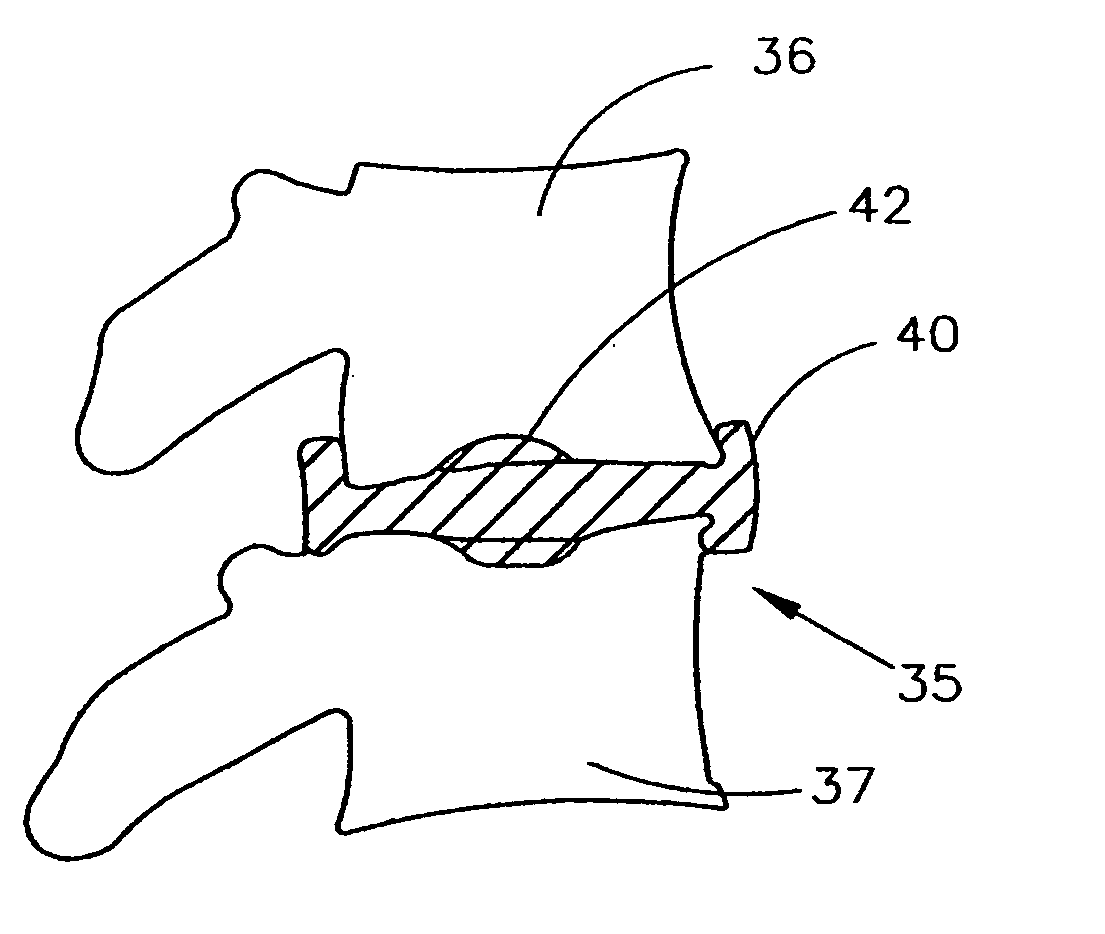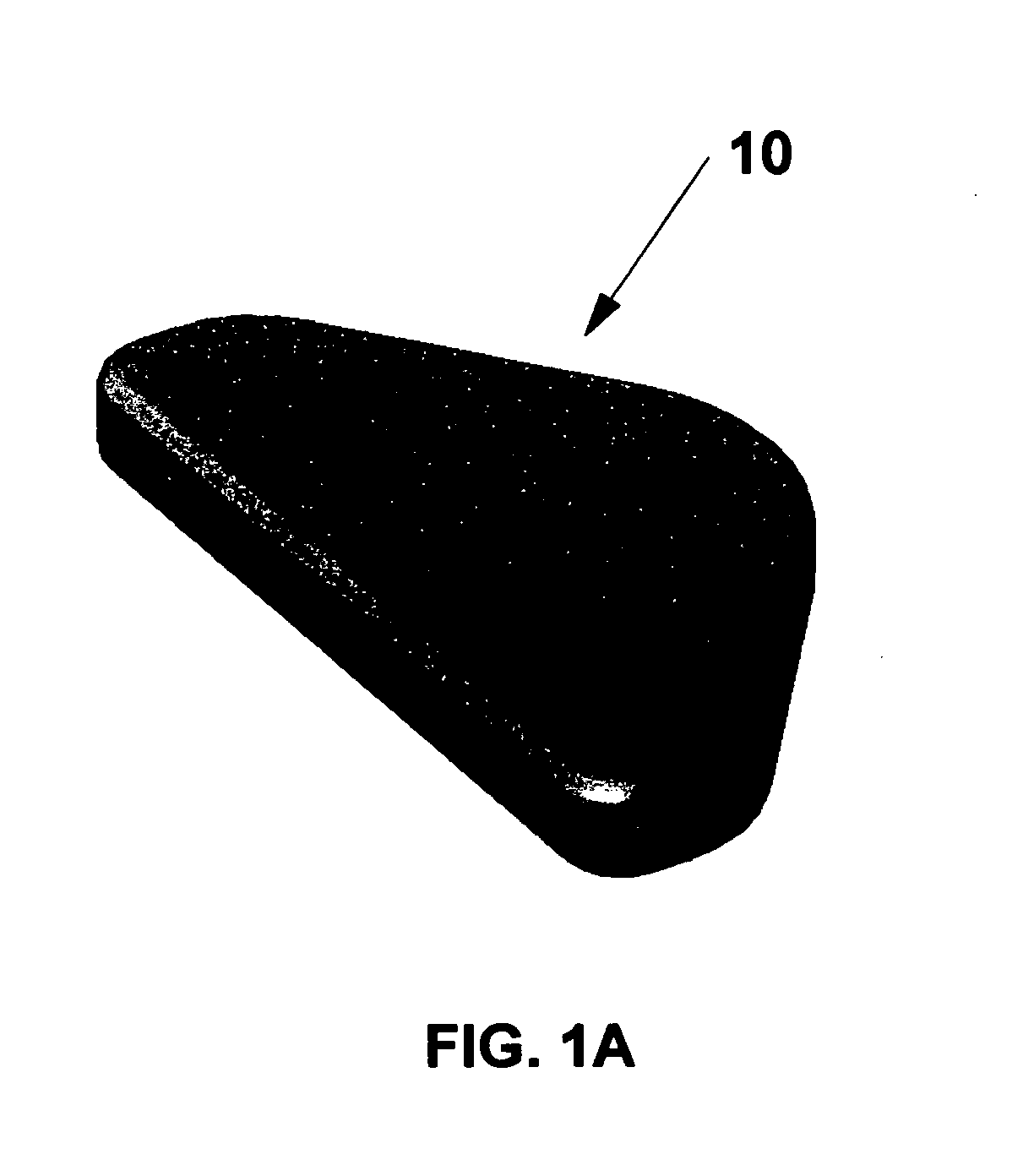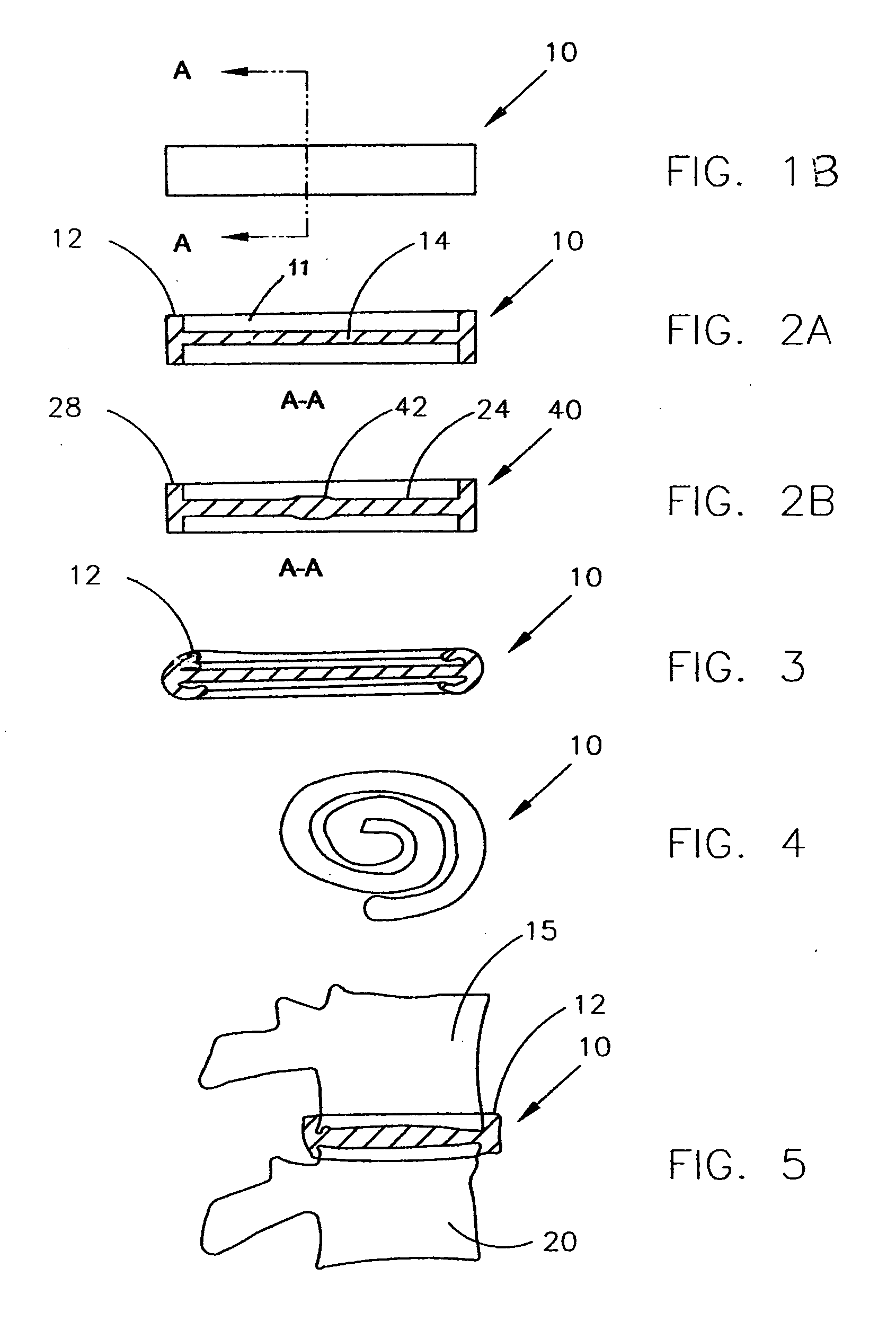Artificial intervertebral disc
a technology of artificial intervertebral discs and discs, which is applied in the direction of prosthesis, joint implants, spinal implants, etc., can solve the problems of limiting mobility, causing pain, and leading cause of pain and disability in the intervertebral disc degeneration
- Summary
- Abstract
- Description
- Claims
- Application Information
AI Technical Summary
Benefits of technology
Problems solved by technology
Method used
Image
Examples
Embodiment Construction
[0045] An endoprosthesis known as an artificial disc and / or an artificial disc nucleus are designed to replace a degenerated intervertebral disc. Such an artificial disc or disc nucleus may be expandable and / or self-expanding.
[0046] An “expandable” endoprosthesis comprises a reduced profile configuration and an expanded profile configuration. An expandable endoprosthesis according to the invention may undergo a transition from a reduced configuration to an expanded profile configuration via any suitable means, or may be self-expanding. Some embodiments according to the invention may comprise a substantially hollow interior that may be filled with a suitable medium, examples of which are set forth below. Such embodiments may accordingly be introduced into the body in a collapsed configuration, and, following introduction, may be filled to form a deployed configuration. Embodiments according to the invention may accordingly be implanted percutaneously or surgically. If implanted surg...
PUM
| Property | Measurement | Unit |
|---|---|---|
| transition temperature | aaaaa | aaaaa |
| transition temperature | aaaaa | aaaaa |
| transition temperature | aaaaa | aaaaa |
Abstract
Description
Claims
Application Information
 Login to View More
Login to View More - R&D
- Intellectual Property
- Life Sciences
- Materials
- Tech Scout
- Unparalleled Data Quality
- Higher Quality Content
- 60% Fewer Hallucinations
Browse by: Latest US Patents, China's latest patents, Technical Efficacy Thesaurus, Application Domain, Technology Topic, Popular Technical Reports.
© 2025 PatSnap. All rights reserved.Legal|Privacy policy|Modern Slavery Act Transparency Statement|Sitemap|About US| Contact US: help@patsnap.com



